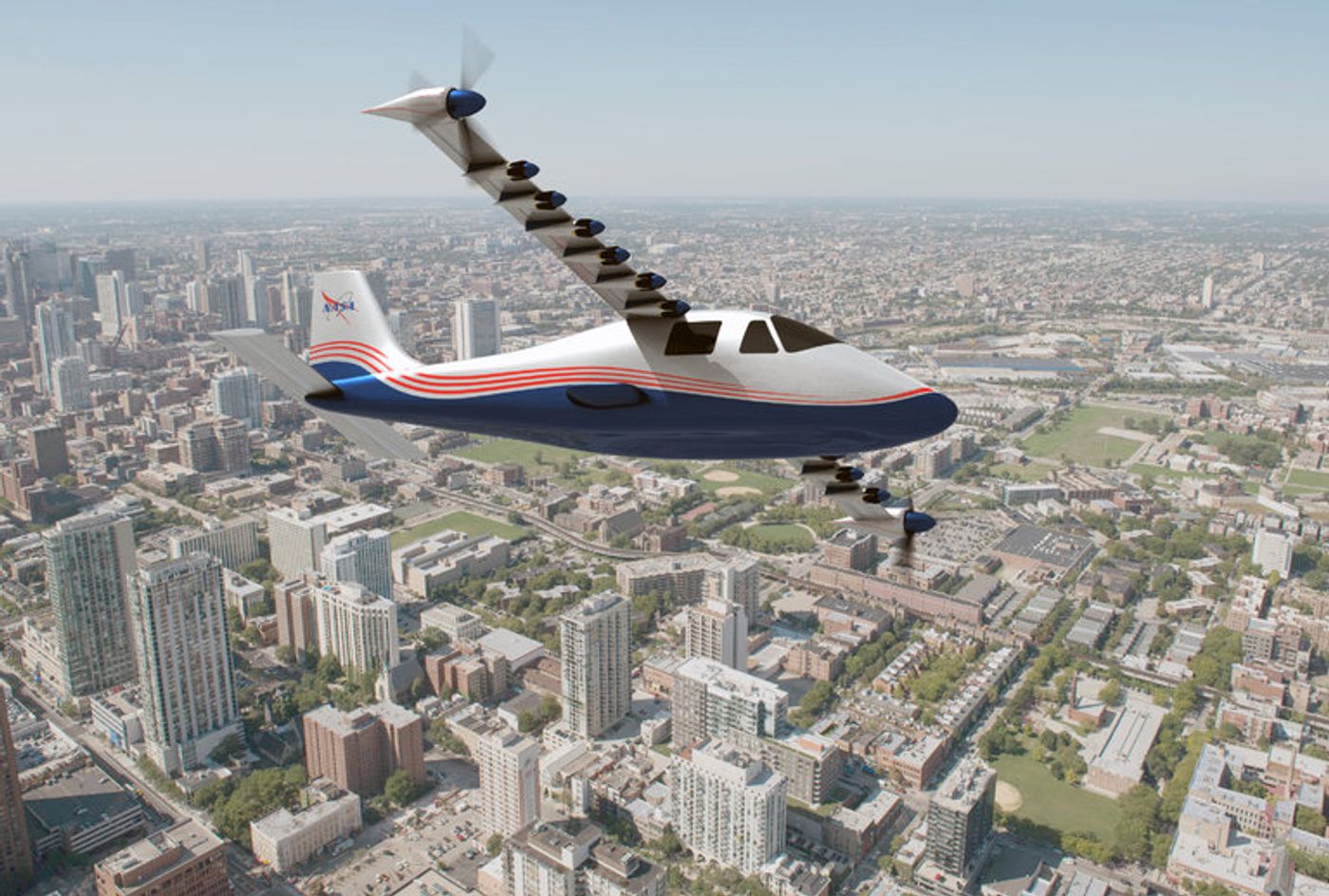NASA Shows Off its Slick New Electric Plane Concept
It’s no secret that NASA has wanted to work on airplanes for a very long time, and NASA was recently given the green light by the U.S. government to perform research on improvements to modern planes and perhaps even leap us into the next generation of air flight capabilities.
With additional funding at the ready, that’s exactly what NASA has been doing. In the process, they’ve come up with an idea for a low-boom supersonic aircraft that would be nice and quiet to everyone underneath it, as well as one for a plane that can take off and land vertically.
But NASA isn’t stopping there. They’ve also just revealed an electric airplane concept dubbed X-57, which was given the nickname Maxwell.

Image Credit: NASA Langley/Advanced Concepts Lab, AMA, Inc
The airplane will utilize 14 propellers that are all individually spin by their own electric motors and are mounted to a specialized wing intended to reduce drag and keep power efficiency in mind.
12 of these motors will be evenly spaced throughout the airplane’s wing, while there will be one each of a motor on the ends of the wings with larger propellers. NASA hopes to create an airplane that can cruise at the expected 175 miles per hour, all while cutting the amount of electrical power theoretically necessary to sustain the aircraft in flight by at least 5x.
NASA will be building a scale model of such an airplane by using a modified Italian Tecnam P2006T light aircraft, which currently supports dual gas-fueled piston engines. These will be replaced with the electric ones that are planned, and because the plane is light, the electric engines should hopefully hold the aircraft in the air.
The research is interesting because it comes after the demonstrated capabilities a 100% electrical power source in plane form as Solar Impulse gets closer to completing its global circuit. Although Solar Impulse did see some issues with power that left it stranded for a few months, the demonstration showed that electricity is a viable way to keep an aircraft in the air so long as it can be tamed.
NASA’s initiative to produce X-planes, or the next generation of airplanes, is deeply funded by the desire to create airplanes that make less noise, are much more fuel efficient, and that are better for the environment.
Paired with a new wing design that could make modern airplanes up to 50% more fuel efficient, electrical propulsion may one day power many airplanes in our skies as we move towards a greener future.
In what appears to be a no-brainer for the future of the aircraft industry, NASA’s work and research may eventually extend into a full-blown aviation upgrade for civilization in decades to come.
Source: NASA via New York Times








